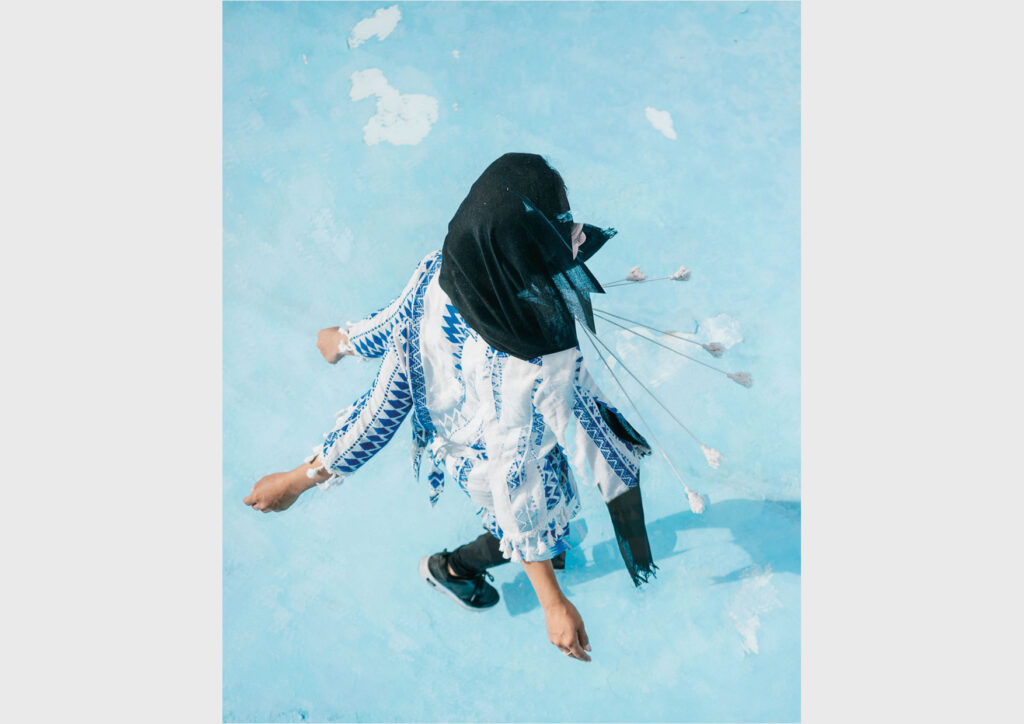REALITY SLIPPED INTO A SYMBOL

From 2018 to 2022, I spent time with refugees and migrants who play sports through the organization Yoga and Sports with Refugees (YSR) on Lesbos, near the Moria refugee camp. During my stays, I took part in various activities such as yoga, swimming, wrestling, muay thai, kung fu, kickboxing, parkour, bodybuilding, and boxing.
Moria Camp, where YSR has organized its training activities since 2017, was arguably Europe’s worst refugee camp, housing somewhere between 6 000 and 21 000 people, depending on the influx, in a camp designed for 3 000 people. YSR uses sports to help people find dignity and meaning, and to give them the mental and physical strength required to overcome the monotony, frustration and stagnation of their current situation. Today, the situation in the Mediterranean region is still profoundly serious, and we see refugees being treated inhumanely, as Europe constantly violates the basic human rights of individuals applying for asylum.
Through my images, I hope to weave ponderings on the political and the ordinary together into a single narrative, and to use it to examine the complex relationship between form and content. By taking a formal approach, I want to see how precarious political and social conditions can be experienced through the everyday and the mundane. In a way, I hope to fuse our lives together through everyday experiences and closeness, as a way of talking about the simple and the grand stories of life at the same time.
The images in the current exposition are all conspicuously manipulated. The creation of these images was a visual process, based on working with the appearance and visuality of the image. Still, the motivation for the process was also intellectual; I wanted to disrupt documentary reading to push observers to question the objectivity of the images; to move from representation to immediate experience. In a world full of manipulated photographs, it is surprising that we still perceive photographs as true in many contexts, even knowing that they can easily be manipulated, and that narratives change depending on where you point the camera. I think this is related to the fact that we read photographs almost intuitively, meaning that we make little distinction between what we see and what we feel when the image is in front of us. Taken together, this means that the trust placed in images is not really about the images as such, but about trust in the photographer. I discuss this approach at length in Honerud and Honerud 2023 [1].
[1] Honerud HH and Honerud JH (2023) How public imagery matters for art and crisis [version 1; peer review: awaiting peer review]. Routledge Open Res 2023, 2:12 (https://doi.org/10.12688/routledgeopenres.17761.1)
Honerud HH and Honerud JH (2023) Fractured Photography. Journal for Artistic Research, issue 29 (https://www.jar-online.net/en)
Hilde Honerud


Hilde Honerud, born in 1977, is a photographer and social anthropologist and associate professor of photography at the University of South-Eastern Norway. She works both with photography and with text, the latter particularly in publications in the field of pedagogy.
Reality Slipped Into a Symbol is the result of several years of work in and at the Moira refugee camp on Lesvos in Greece. From 2018 to 2022, Honerud followed and photographed refugees who were involved in sports through the organization Yoga and Sports with Refugees (YSR). In an everyday life characterized by uncertainty, monotony and complete dependence on almost abstract political processes, sport becomes a way to pass the time, find meaning and stay healthy, mentally and physically.
“Narratives change depending on where you point the camera,” says Honerud. In the series from Lesvos, she pushes the boundaries of the documentary genre by combining multiple places and moments in one frame. In her digitally manipulated images, the refugees appear as fragments of resistance and flexibility, activity and stagnation.